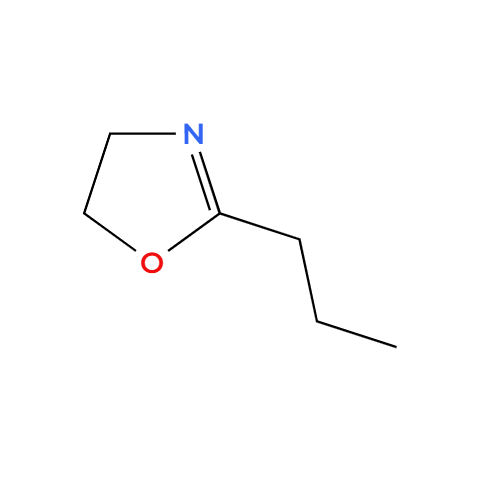- Homepage
- All Products
- Polymers - Biodegradable & Biocompatible
- 2-Propyl-2-oxazoline CAS 4694-80-8

2-Propyl-2-oxazoline CAS 4694-80-8; (PrOx)
Product specifications
PrOx; 2-Propyl-2-oxazoline+ 4,5-Dihydro-2-propyloxazole; 2-propyl-4,5-dihydro-1,3-oxazole; CAS 4694-80-8.
Purity: 97,0%
Product properties
| Sum formula | C6H11NO |
| Molecular weight | 113.16 g/mol |
| Physical State (20 deg.C) | Liquid |
| Store Under Inert Gas | Store under inert gas |
| Condition to Avoid | Air Sensitive |
| Storage temp. | 2-8° |
Price & Availability
| Cat nr | Stock | Quantity | Price |
|---|---|---|---|
| 4694808-1 | In stock | 1 kg | €2900,- |
| 4694808-10 | Out of Stock | 10 kg | On request |
| 4694808-100 | Out of stock | 100 kg | On request |
2-n-Propyl-2-oxazoline - CAS 4694-80-8
David Babuka et al. (2022) decided to use the 2-methyl-2-oxazine (MeOzi) as a hydrophilic monomer and 2-propyl-2-oxazoline (PrOx) as the thermoresponsive or hydrophobic monomers. The poly(2-alkyl-2-oxazoline) (PAOx) based polymers were also shown to exhibit properties as favourable for bioapplications as some long established polymers used in biomedical research.
The homopolymers PMeOzi, PPrOx and PBuOx and their behaviour in
aqueous media with regard to changing temperature was thoroughly investigated in
previous study. Only the PPrOx homopolymer exhibited thermoresponsive
behaviour and only the PBuOx homopolymer was shown to be insoluble in water at
room temperature. This is in agreement with the observed result that only the
PrOx-containing copolymers responded by thermally induced self-assembly and upon heating above the Tcp transitioned from molecularly dissolved unimers into micelles.
The specific temperature of the thermal response of the samples containing the
PrOx monomers varied with the varying ratio of hydrophilic to thermoresponsive
monomers in their chain. Their Tcp seems to be derived from that of the PPrOx
homopolymer (≈25°C) and for our copolymers it increases with the growing
content of the hydrophilic monomer MeOzi in the polymer chain. The copolymers with gradient architecture exhibited higher TCP values than the block copolymers, which could be caused by the presence of the hydrophilic MeOzi monomers among the thermoresponsive PrOx monomers.
The studies of biomedical applicability showed that all copolymers with 1:1
monomer ratio expressed good drug loading properties and low cytotoxicity. As such
both PrOx and BuOx-based copolymers could be considered for further biomedical
research based on the desired properties of the system. The gradient copolymers were
shown to have somewhat different properties than their monomerically equivalent
block copolymers, however these were still comparable and well suitable for potential
biomedical applications.
References 2-propyl-2-oxazoline article
- BABUKA, David. Self-assembled polymer systems responsive to external stimuli for biomedicine. Dizertační práce, vedoucí Štěpánek, Petr. Praha: Univerzita Karlova, Matematicko-fyzikální fakulta, 2022.
- Babuka, D.; Kolouchova, K.; Loukotova, L.; Sedlacek, O.; Groborz, O.; Skarkova,
A.; Zhigunov, A.; Pavlova, E.; Hoogenboom, R.; Hruby, M.; Stepanek, P. SelfAssembly, Drug Encapsulation, and Cellular Uptake of Block and Gradient
Copolymers of 2-Methyl-2-oxazine and 2-n-Propyl/butyl-2-oxazoline.
Macromolecules 2021, 54(23), 10667-10681.

